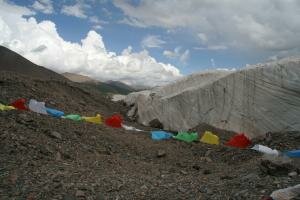Glaciers in Tibet Were Never Really Large
The Tibetan Plateau is the largest and highest mountain region on Earth with glaciers whose meltwater provides the water supply for more than 1.3 billion people through several of the largest rivers in Asia.
In a thesis in Physical Geography from Stockholm University, Jakob Heyman shows that the glaciers in Tibet have remained relatively small and have not been much larger than today for tens of thousands to hundreds of thousands of years back in time.
The study deals with the growth and decay of glaciers in Tibet far back in time, with the aim of attaining better knowledge of glaciations and their link to climate variations. The results show that the glaciers in Tibet have varied in size but that they have been fairly small far back in time.
In several places the glaciers seems to have been similar in size to today's glaciers or just slightly larger during the entire last Ice Age. Considering that Tibet, often called the roof of the world or the third pole, is where the largest number of glaciers outside the polar regions are located, this is remarkable.
"At the same time as huge ice sheets covered northern Europe and North America during the last Ice Age twenty thousand years ago, the glaciers in Tibet were not much larger than today," says Jakob Heyman.
The field data can be used, together with a mathematical model for the growth of a glacier, to find out how large the climatic variations have been during the last Ice Age. Preliminary results show that the climate was probably somewhat colder than today but was nevertheless relatively stable.
"If today's temperature in Tibet were to decrease by five degrees or more, which is not much for an Ice Age cycle, a large ice sheet would probably start growing. No ice sheet seems to have existed in Tibet, and the cooling can therefore not have been that strong," says Jakob Heyman.

"Glacier in Tibet. (Credit: Image courtesy of Expertanswer)"
Source: Expertanswer
|